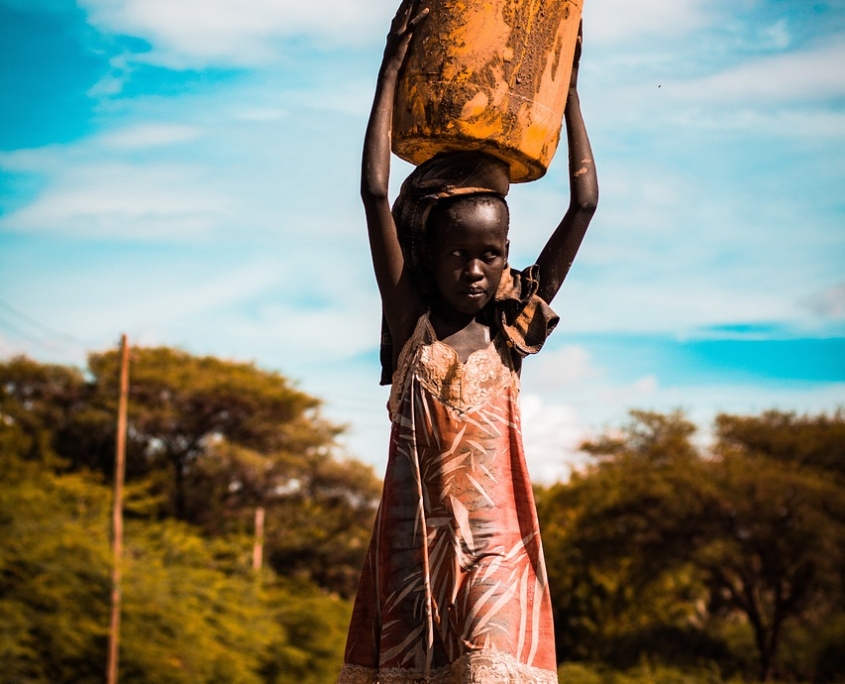10 Facts about Water Scarcity in Burkina Faso
 Water scarcity in Burkina Faso is a defining development challenge facing the region. Despite strong economic improvement in recent years, Burkinabè people still face many issues of poverty and water access.
Water scarcity in Burkina Faso is a defining development challenge facing the region. Despite strong economic improvement in recent years, Burkinabè people still face many issues of poverty and water access.
Here are 10 things you need to know about water scarcity in Burkina Faso.
- Wealth inequality in Burkina Faso means water inequality. Burkina Faso has a Gini Index of 47, meaning there is high wealth inequality nationally. Additionally, the poverty rate in rural communities is double that of cities. Thus, public health ills like open defecation and nonexistent hygiene practices are far more common for poor farmers and villagers than their wealthy counterparts.
- National water provision is messy. Two national organizations officially govern water in Burkina Faso. The Ministry of Water and Sanitation (MWS) and its regional dismemberments oversee national sanitation infrastructure, as well as rural water provision. ONEA, the Office national de l’eau et de l’assainissement (National Office of Water and Sanitation) is the country’s private urban water utility. ONEA only contracts with the MWS to provide water in cities, and the government very clearly differentiates between cities and rural communities. This leaves over 15 million people in agricultural communes and villages throughout the country outside of ONEA’s service area, which means local committees or NGOs must provide supporting infrastructure across the country.
- Water access is critical to protecting Burkinabè farmers. Experts in the WASH space estimate more than 15 million Burkinabè citizens work in agriculture. This means protecting irrigation systems is critical to preventing causes of poverty like unemployment, low agricultural productivity and food insecurity.
- Refugees fleeing conflict desperately need water. Water scarcity in Burkina Faso is being exacerbated by extremist violence from jihadist groups like Ansaroul Islam. Dozens of water points have been destroyed in recent months, and more than 200,000 people living in northern settlements like Djibo, face the risk of being caught in the crossfire if they try to fetch available water.
- Hospitals and health facilities suffer from a lack of water access. Lack of proper sanitation and hygiene in Burkinabè hospitals puts patients at an increased risk of nosocomial infection (an infection that originates in a hospital). Research has found that 61% of health workers don’t practice proper handwashing techniques—not because they don’t want to, but because piped water is often absent from their workplaces.
- Burkina Faso mainly faces economic water scarcity. While barriers like infrastructure, maintenance and startup capital fall under the umbrella of ‘economic’ causes of water scarcity in Burkina Faso, ‘physical’ causes such as climate change are still a threat in some areas.
- Climate change is putting water infrastructure at risk. Burkina Faso has experienced nearly two dozen climate and water-cycle-related disasters since 2000, affecting millions of people. Additionally, water scarcity in Burkina Faso contributes to the country being one of the most climate-vulnerable on Earth, making environmental crises like flooding, drought and erratic wet/dry seasons devastating to farms and existing drinking water sources.
- Structural challenges can impede progress. Ethnic groups like the Gourmantché and Fulani are habitually self-segregated in communes outside Burkina Faso’s major cities, making it difficult to connect them to urban water infrastructure. Additionally, the costs of implementation projects can quickly become insurmountable for working-class citizens, making international aid crucial to getting people access to adequate health care and hygiene education and resources.
- Green technology is leading the charge. Sustainable solutions like solar-powered pumps and easy-to-install hand pumps help NGOs reduce water scarcity in Burkina Faso’s health sector and villages. Furthermore, sanitation experts have suggested treating wastewater as a resource, rather than a problem: Methane-rich sanitation waste can be treated and used to generate energy.
- Many NGOs are making good progress. Initiative: Eau, Water and Sanitation for All and End Water Poverty are some of the NGOs leading the charge. Many of their investments in WASH projects in some regions have shown to generate an eight-fold return. NGOs in the water-access space meet at the biannual High-Level Political Forum on Sustainable Development and use their regional expertise to advise world leaders on how to address development problems like water scarcity in Burkina Faso.
Though there’s still a lot of work to be done, international NGOs and governments alike have stepped up to the challenge of reducing water scarcity in Burkina Faso.
– Finneas Sensiba
Photo: Pixabay
